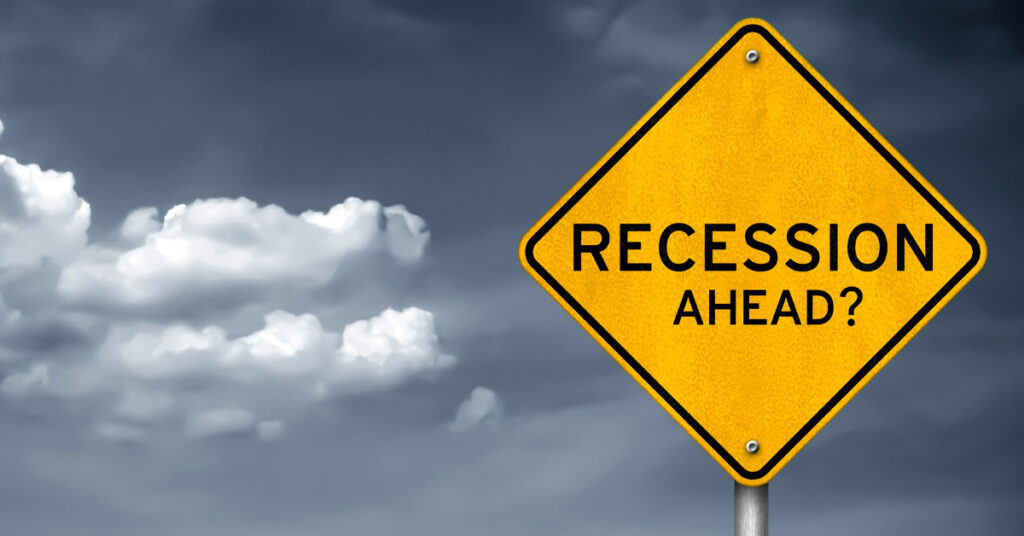Recession Pushed to Summer of 2024?
A recession is a significant and prolonged economic downturn, characterized by a decline in economic activity. This includes a contraction in gross domestic product, rising unemployment rates, reduced consumer spending, and decreased business investment. Recessions can be caused by various factors, including financial crises, excessive debt, inflation, supply shocks, and external economic events.
Investors, economic experts, and the Federal Reserve have been warning for the past year that a recession could be on the way. The Treasury market first began showing signs that a U.S. recession lurks on the horizon almost a year ago, in late October of 2022. This happened when the Fed started its aggressive interest rate hikes to counteract inflation. Although it was thought to be an inevitability for 2023, the U.S. economy has so far avoided it. So, where is this long-anticipated recession?
Well, the economy proved itself more resilient than expected, and the case for a 2023 recession has since been crumbling. But just because we’ve pushed it down further doesn’t mean it’s not coming: Many economists still think a downturn is likely on the horizon. However, a growing chorus of experts have pushed the predicted time out to later, now saying it could arrive next year, in July or August of 2024.
There’s a reason it’s so hard to pinpoint when exactly a recession will happen: there’s a lag between the Fed’s rate hikes and when they start to affect the economy. According to Fed Chair Jerome Powell, the Fed’s recent rate hikes will take “a year and change” to make an impact. It’s been over a year since the Fed began its rate-hiking cycle, which means they could fully take hold soon.
How Likely is a 2024 Recession?
According to a recent poll,* 78% of economic experts predict that the chance of an upcoming recession is greater than 50%. 28%, meanwhile, say the odds are higher than 70%. This shows probable odds that an economic environment featuring job loss and slower business growth is on the horizon. Furthermore, economists are mostly in agreement that the projected recession is at least unlikely to be as severe as the downturn that came with the coronavirus pandemic (a drip that pushed unemployment up to double-digit levels.) Goldman Sachs economists pegged the odds of a recession in the next 12 months at 15%, meaning that to them at least there isn’t a pressing danger of one.
The Federal Reserve’s Beige Book report on September 6th showed that the economy grew modestly throughout July and August, resulting from the “last stage of pent-up demand” for leisure activities.
And then there’s what the yield curve indicates. Proven in the past to be a reliable indicator of a recession, an inverted yield curve shows that long-term interest rates are less than short-term interest rates. With an inverted yield curve, the yield will decrease the farther away the maturity date is. Recessions on average take around 589 days to materialize following the 10-year and 3-month yield curve first inverted, according to data acquired since the late 1960s. It’s tempting to dismiss this cycle’s yield curve, but history has shown us that recessions haven’t been quick to arrive after the yield curve first inverts.
Don’t Get Too Comfortable…
Recessions are a normal, accepted occurrence in the business cycle that everyone knows are bound to happen. And, few downturns seemed so easy to predict as the one arriving in the aftermath of the Coronavirus pandemic. Now, the Federal Reserve has raised interest rates to a level not matched since 2007, and a pace not seen since the 1980s. The Fed has never before been able to raise interest rates this far and fast without prompting a recession. And historically, the Fed has also never been able to cool down excess inflation without causing one. But, to the surprise of most economists, a downturn still hasn’t yet shown up.
A number of factors have delayed the onset of a recession this year. These include the Social Security cost-of-living adjustment in January, the loosening of financial conditions in stocks and bank liquidity after the March banking crisis, and the residual resilience of the labor market. We could, however, still be on the path toward a downturn in the U.S. economy sometime next year. To be sure, the economy has since slowed after its grand reopening following the pandemic-induced lockdowns. Banks have also tightened lending standards in the wake of three major failures earlier this year. But consumers have continued spending, and the labor market is still chugging along.
We Can Help
In today’s economic landscape, concerns about a possible economic downturn remain on the minds of many. And while you can’t predict the future, you can take steps to prepare for it. Are you worried about all this talk about a recession on the way? We can help you find ways to safeguard your financial future. Your financial goals are unique, and your strategy should be, too. We tailor the recommendations we make to your specific needs: You need to have a solid financial strategy in place, keeping you protected no matter what happens in the future.
We can help you understand your risk tolerance and implement strategies to hopefully minimize losses. Retallick Financial Group is here to help you get educated, and make informed decisions that will protect your wealth. Contact us today to attend an educational dinner seminar or book a no-obligation, one-on-one meeting with us. We may be able to help you create a financial strategy to offer you comfort, even in uncertain times like these.
*Sources: MarketWatch, Bankrate, CNN Business.


